|
|
|||||
| home > architetture | |||||
| NL
ARCHITECTS. BasketBar |
|||||
| [in italiano] | Waiting
for the Wiel Arets' 6-million books, black, massive University Library,
to be completed by 2004, the Utrecht University Campus, according to
its best tradition, gives birth to another provocative and irreverent
building: the NL Architects' BasketBar, which consists of a flat basket
ground over a grand café room, as 15 x 15 meters flat extension of the
previous bookstore, just on the back of the OMA's Educatorium. In the early 90's, OMA was to prepare the master plan for the renewed University Campus, which encompasses a lot of Dutch Second Modernity's exemplary buildings such as Mecanoo's Faculty of Economics and Management (1995), Neutelings Riedijk's Minnaert Building (1997), UN Studio's NMR Laboratory (1999) and OMA's Educatorium (1997) in fact. All these buildings are spread on a large site called De Uithof at the edge of the city, hosting about 30.000 among staff and students. The BasketBar, together with the Educatorium, represents the only extensive meeting place for all this population. Once again, the NL Architects -recently nominated for the NAi Prize 2002 with the Shop Interior Mandarina Duck in Paris, also exhibited in the Dutch Pavillon last Biennale of Venice- deal with the issue of functional and typological 'unespectedness', using the beloved but ordinary, and now even poetic, basket backboard. Daniele Mancini |
||||
 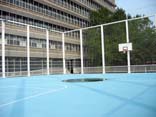  |
CAMPUS
CITY. The campus of the University of Utrecht, de Uithof is developing
from a mono-functional non-place into something that might be called
a City: a rich amalgam of urban 'programs' and functions. The urban
plan by OMA consists of a compact clustering of University related buildings:
intensifying specific areas into a more urban condition and at the same
time reinforcing the intrinsic qualities of the existing landscape. |
[18oct2003] | |||
| ISLANDS
IN THE STREAM. The tool used to prevent the scattering of urban stuff
over the entire area - to enhance City and Landscape at the same time-
is the strong site boundary that is based on the existing buildings.
All new substance should develop within these perimeters. The first
building to fuck with the self-inflicted system is OMA's Educatorium:
the 'wave' exceeds the boundary thus allowing sideway vistas from the
'tube'. |
|||||
 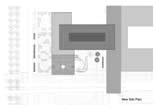 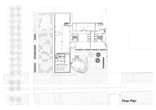 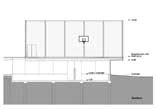 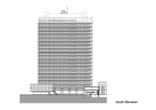 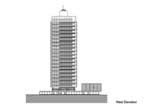 |
  IT'S A BAR. Since restrictions for housing on the campus recently were abolished and student apartments became imaginable here, nightlife became an issue as well: a local bar was needed. The Café should serve as the informal center of the campus; a relaxed meeting place for professors, researchers and students. The crossing of Heidelberglaan (the main access road to the campus) and Genevelaan seemed to be the best site for this enterprise, close to relatively public buildings like the Educatorium and the new Library and right under the Van Unnik Building, the massif 80 meters high 'logo' for the University as a whole.  JACK BLOCK. The Van Unnik Building is constructed with the so-called Jack Block System: a surreal construction method that starts building the top floor on ground level (and actually completing it, like building an attic in the basement), then jacking it up to construct the next floor, again on the zero level. The last act is lifting all 21 stories to construct the first floor: a bizarre gravity-defying operation that sends Baron Von Münchhausen back to college. |
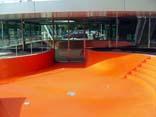
|
|||
| WELCOME.
The Uithof café is a 15 x 15 meter extension of the existing bookstore.
The remarkable flatness of that construction is extended with the oversized
roof of the new bar. The complex looks 'crushed' by the Van Unnik. Since
the floor height of the existing shop is not appropriate for a Grand
Café the Bar is sunken in the ground: you enter on top of the counter
and walk-in over the bar. The lowered position allows for a new perspective
on the public square. Like the American Bar by Adolf Loos it attempts
to combine intimacy with an extensive view. |
|||||
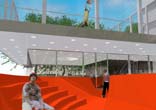
|
 BOOKBAR. A connection between the bar and the bookshop is made; the 'reading table' will become point of exchange between the two. OUT LOUNGE. On the west flank there's a terrace for the afternoon. A field of cylindrically carved-out hedges of 1.2 meters high provide shelter, generate a series of cozy lounges, while at the same time still allowing eye contact with the other 'rooms'. POOL. The 'orange pool' brings together a sunken terrace, a mini amphitheatre and the access for the disabled: a cool mixture of people hanging out with drinks, skaters and people in wheelchairs. BASKETBAR. The XL roof of the café provides the ultimate location for a basketball court. The 'publicity' of its position creates the ultimate platform for the display of superior skill: show off, shoot hoop. Since the structure is so flat there's still a direct relation to the ground. From the elevated walkway system that connects most buildings on the Uithof the new ground level looks 'natural'. The middle circle of the court is made out of glass, establishing a visual relation between Basket and Bar. NL Architects |
  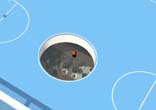
|
|||
| NL
ARCHITECTS. BasketBar |
|||||
| Grand
Café 'The Basket' Genevelaan 4-8, Uithof, Utrecht, The Netherlands architecti: NL Architects collaborators: Caro Baumann, Sybren Hoek, Kirsten Huesig, Nataly Lavi, Friso Leeflang, Jennifer Petersen, Misa Shibukawa, Rolf Touzimsky, Richard Woditsch interior designer Grand Café 'The Basket': De Drie Musketiers client: Universiteit Utrecht Huisvesting, Aryan Sikkema structural engineers: Adviesbureau voor Bouwtechniek bv ABT Velp / Rob Nijsse mechanical engineers: Ingenieursburo Linssen bv building management: Berenschot Osborne contractor: Bouwbedrijf Van den Hengel bv installations: Van Losser bv Rijssen |
|||||
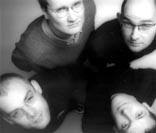
|
NL Architects is an Amsterdam based office. The four principals, Pieter Bannenberg, Walter van Dijk, Kamiel Klaasse and Mark Linnemann, officially opened practice in January 1997, but have shared workspace already since the early nineties. All were educated at Delft University while living in Amsterdam. NL's 'commuting' office started while carpooling between these cities. Their first office was a blue-metallic Ford Escort Station (in that sense they like to think of themselves as autodidactic; the recurrent fascination with mobility and tarmac perhaps could be traced back to being 'educated' on the highway. It might also explain their logo: a iumper sticker). Often projects focus on ordinary aspects of everyday life, including the unappreciated or negative, that are enhanced or twisted in order to bring to the fore the unexpected potential of the things that surround us. NL Architects currently employs an international staff of six to ten people. The members of NL Architects are also involved in teaching, workshops and lectures at several institutions, universities and academies in the Netherlands and abroad: TU Delft, TU Eindhoven, Academies Rotterdam and Amsterdam, TU Wien, Bartlett and AA London, Berlage Institute Amsterdam, ETH Zurich, Sci-Arch L.A. Recently their first Book was published by 010 Publisher: NL 98 99 00. | ||||
|
Per
candidare progetti laboratorio
|
|||||